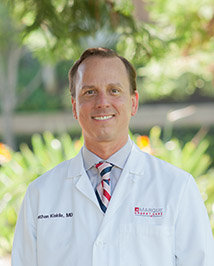
So the million-dollar question is why is this so common and what can we do to prevent back and neck injuries? The simple fact is that our upright posture does not serve well for our spine! The stack of vertebral bodies of the spine are not well designed for upright human activity, but are better served as a 4 legged creature. Thus, we are by nature more susceptible to back and neck injuries.
There are three major elements to prevent back pain:
1. POSTURE: Always try to keep your head, shoulders and hips in line, even when bending or reaching for something. This translates into more bending with your knees when standing and using some type of lumbar support when sitting, especially when sitting in a car or in front of a computer.
2. FLEXIBILITY: Stretching your neck, back, and leg muscles every day can help avoid pulls and strains. This is especially important after the age of 35 when we all gradually lose a lot of our normal tissue elasticity. Ask your doctor for a physical therapist referral on proper stretching to prevent injuries.
3. STRENGTHENING: Strengthening your back actually means strengthening your core muscles, especially your abdominal muscles; this can be done with simple “crunches” or by more formal training such as Pilates or yoga.
In the unfortunate event of back spasms, your doctor will likely offer you anti-inflammatory medications as well as muscle relaxants to alleviate your symptoms. The normal recovery course is typically 3-5 days.
The information provided is for general interest only and should not be misconstrued as a diagnosis, prognosis or treatment recommendation. This information does not in any way constitute the practice of medicine, or any other health care profession. Readers are directed to consult their health care provider regarding their specific health situation. Marque Medical is not liable for any action taken by a reader based upon this information.